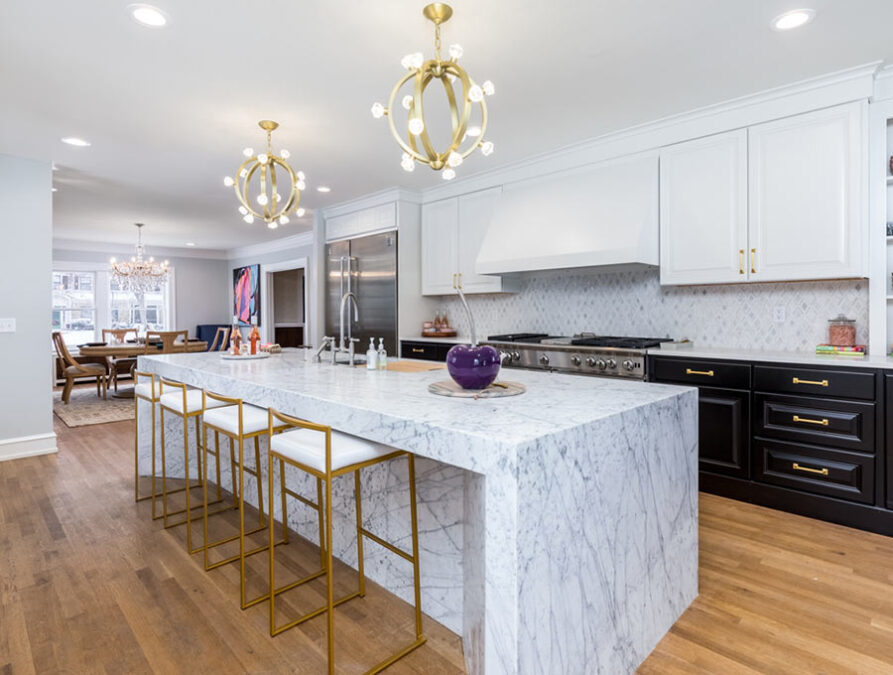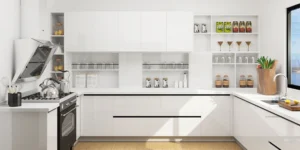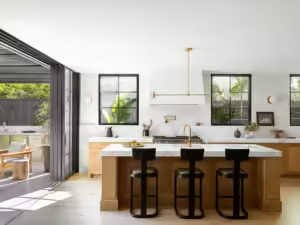The Ultimate Guide to Marble Kitchen Countertops: Elegance and Durability for Modern Homes?

Marble kitchen countertops are often celebrated for their timeless beauty and luxurious appeal, providing a sense of sophistication to any kitchen. Their unique veining, range of colours, and natural elegance make marble popular for classic and contemporary kitchens. In this guide, we’ll delve into everything you need to know about marble kitchen countertops, from their benefits and drawbacks to maintenance tips and design inspirations.
What Are Marble Kitchen Countertops?
Marble kitchen countertops are crafted from natural stone, typically quarried from mountainous regions worldwide, such as Italy, Greece, and the United States. These countertops are highly sought after due to marble’s distinct veining patterns and rich colours. Each slab is unique, providing a one-of-a-kind centrepiece for kitchens.
The Benefits of Marble Kitchen Countertops
Marble kitchen countertops have gained popularity due to their unique properties and advantages. Here are some of the benefits that make them a preferred choice among homeowners:
- Aesthetic Appeal
Marble’s timeless beauty is one of its most significant selling points. The natural veining and range of colours, from pure white to deep green, add elegance to any kitchen setting.
- Heat Resistance
Marble is naturally heat-resistant, making it an excellent choice for kitchens. This quality allows it to withstand the high temperatures associated with cooking, baking, and food preparation without becoming damaged or warped.
- Longevity and Durability
Although softer than granite, marble kitchen countertops are still incredibly durable when properly cared for. Proper maintenance can last a lifetime, adding long-term value to a home.
- Cool Surface for Baking
Professional chefs and baking enthusiasts love marble for its naturally cool surface, which is ideal for working with pastry dough and other temperature-sensitive ingredients.
Potential Drawbacks of Marble Kitchen Countertops
While marble kitchen countertops bring unmatched beauty, they come with some challenges worth considering before installation.
- Porosity and Staining
Marble is a porous material that can easily absorb liquids if improperly sealed. Spills from acidic substances like wine, citrus juices, or oils can cause stains and etching on the surface. Routine sealing helps mitigate this risk.
- Scratches and Etching
Due to its softer nature than granite or quartz, marble can easily scratch and develop etching marks, especially in high-traffic kitchens. Using cutting boards and handling heavy objects can help protect the surface.
- Higher Maintenance Requirements
Marble requires regular maintenance, including sealing, cleaning with pH-neutral cleaners, and promptly wiping up spills to preserve its appearance and longevity.
Types of Marble for Kitchen Countertops
Marble comes in various types, each with unique veining and colour patterns. Here are some popular options:
- Carrara Marble
Carrara marble is one of the most popular types due to its affordability and classic look. It features soft, subtle veining in shades of grey and white, making it ideal for kitchens with a minimalist or classic design.
- Calacatta Marble
Known for its bolder veining and luxurious appeal, Calacatta marble is more expensive than Carrara. Its dramatic veins can vary in color, adding depth and character to kitchen countertops.
- Statuario Marble
This type of marble balances Carrara and Calacatta with a bright white background and distinct veining. Statuario is highly prized and often used in high-end kitchen designs.
- Emperador Marble
For those seeking darker tones, Emperador marble is an excellent choice. It features rich brown tones with intricate veining, making it ideal for kitchens with a warm, earthy ambiance.
Cost of Marble Kitchen Countertops
The cost of marble kitchen countertops varies depending on the marble type, the slab thickness, and labour costs. Here’s a breakdown of what you can expect:
- Basic Marble (Carrara): $40 – $100 per square foot
- Mid-range Marble (Calacatta): $100 – $250 per square foot
- Premium Marble (Statuario): $250 and above per square foot
In addition to the cost of the material, homeowners should factor in installation fees, which can vary widely based on the complexity of the design.
Installation Process for Marble Kitchen Countertops
Installing marble kitchen countertops requires precision and skill, often involving the following steps:
- Measuring and Templating
The process begins with measuring the kitchen area to create a template for the marble slab. This ensures an accurate fit and helps avoid costly mistakes.
- Cutting and Edging
The marble slab is then cut to size based on the template. Edges can be customized with bullnose, beveled, or ogee styles to enhance the countertop’s appearance.
- Sealing and Finishing
After cutting, the marble is sealed to protect against stains and scratches. Many professionals recommend re-sealing marble countertops annually for optimal protection.
- Placement and Securing
Finally, the marble is placed onto the cabinets and secured, creating a stable and elegant countertop surface for the kitchen.
Maintenance Tips for Marble Kitchen Countertops
Proper maintenance is essential to keep marble kitchen countertops looking their best. Here are some maintenance tips:
- Sealing: Marble countertops should be sealed at least once a year or more frequently if used heavily.
- Cleaning: Use a pH-neutral cleaner specifically formulated for natural stone. Avoid abrasive cleaners that can scratch or damage the surface.
- Avoiding Acidic Substances: Citrus, vinegar, and other acidic substances can cause etching. Wipe up spills immediately to prevent stains.
- Using Cutting Boards: Prevent scratches using cutting boards for food preparation rather than cutting directly on the marble surface.
Marble Kitchen Countertop Design Ideas
Marble can complement various kitchen styles, from classic to ultra-modern. Here are a few design ideas:
- White Marble with Gold Accents
White marble countertops with gold fixtures create an elegant and opulent look, perfect for those seeking a luxurious yet modern kitchen.
- Contrasting Dark Cabinets
Pairing white marble with dark cabinets can create a striking contrast, adding depth and dimension to the kitchen space.
- Waterfall Marble Countertops
For a contemporary look, consider a waterfall edge, where the marble extends vertically down the side of the island or countertop, creating a seamless flow.
- Marble Backsplash Pairing
Pairing marble countertops with a matching or contrasting marble backsplash can enhance the visual continuity in the kitchen, making the space feel cohesive and balanced.
Pros and Cons of Choosing Marble Kitchen Countertops
To make an informed decision, consider these summarized pros and cons of marble kitchen countertops:
| Pros | Cons |
|---|
| Elegant and timeless | Prone to staining |
| Heat-resistant | Requires regular sealing |
| Cool surface for baking | Easily scratches |
| Unique veining patterns | Higher upfront cost |
Conclusion: Are Marble Kitchen Countertops Right for You?
Marble kitchen countertops are an investment in style, elegance, and functionality. While they require more maintenance than other countertop materials, their aesthetic appeal and timeless beauty make them an excellent choice for many homeowners. If you’re willing to care for and maintain your countertops properly, marble can offer a lifetime of beauty and charm in your kitchen.



